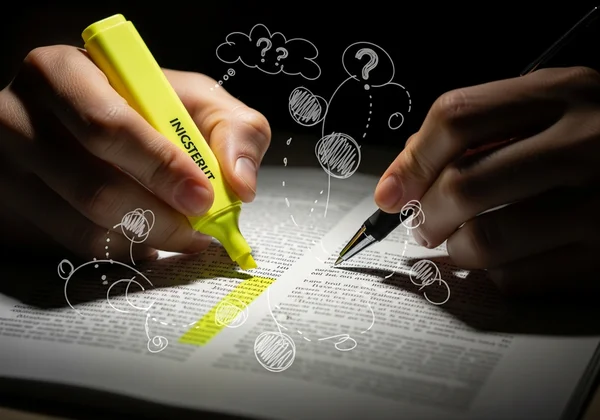Ultimate Guide to Speed Reading Techniques: Boost Your WPM
Feeling buried under an endless stream of emails, reports, and articles? Many of us feel overwhelmed, struggling to keep up. But what if you could read faster, absorb more, and reclaim your valuable time? This is where mastering speed reading techniques becomes a game-changer. What is a good reading speed? The first step to improvement is understanding where you currently stand, and our free tool can help you establish that baseline.
This comprehensive guide will serve as your toolkit, introducing you to proven methods that can significantly boost your reading efficiency. We will explore core strategies to increase your words per minute (WPM) without sacrificing understanding. By applying these methods and tracking your progress, you can transform from a passive reader into an active, efficient information processor. Ready to see how much faster you can truly read? You can check your WPM right now to see your starting point.

Mastering Core Speed Reading Techniques
The foundation of faster reading lies in breaking old habits that slow you down. Traditional reading methods taught in school prioritize pronunciation over pace. The following core techniques are designed to retrain your eyes and brain for speed and efficiency.
Visual Pacing: The Power of the Pointer Method
Have you ever noticed your eyes jumping back to reread words you’ve already seen? This habit, known as regression, is a major obstacle to fast reading. Visual pacing solves this by using a physical guide—like your finger, a pen, or a stylus—to direct your eyes smoothly across the text.
The pointer method forces your eyes to follow a consistent, forward motion, minimizing regressions and keeping you focused. By setting the pace with your hand, you encourage your brain to process information faster. Start by moving the pointer slightly faster than your comfortable reading speed. Over time, you can gradually increase the speed, training your eyes to move more quickly and deliberately across each line. This simple yet powerful technique is one of the easiest ways to see an immediate improvement in your reading pace.

Chunking: Reading Multiple Words at Once
Instead of reading word-by-word, speed readers learn to see and process groups of words at a time. This technique, known as chunking or phrase-reading, dramatically increases efficiency. Your brain is perfectly capable of understanding meaning from phrases rather than individual words. Think of it like recognizing a familiar face instantly without analyzing each feature separately.
To practice chunking, soften your gaze and try to expand your peripheral vision to take in three to five words in a single glance. Instead of focusing on "The," then "quick," then "brown," then "fox," you see the entire phrase "The quick brown fox." This reduces the number of eye movements (saccades) required to read a line, saving time and mental energy. Begin with shorter chunks and gradually expand your visual span as you become more comfortable. A great way to see the impact of this technique is by taking a reading comprehension test before and after your practice sessions.
Eliminating Subvocalization for Faster Reading
Subvocalization is the common habit of silently pronouncing each word in your head as you read. While it can aid comprehension for complex material, it acts as a bottleneck for speed because you can only read as fast as you can speak. To break the 200-400 WPM barrier, you must learn to minimize this internal monologue.
Eliminating subvocalization is challenging but achievable. Try occupying your inner voice by humming softly, chewing gum, or counting from one to three repeatedly in your head while you read. These distractions make it difficult to "hear" the words you are reading, forcing your brain to rely on visual recognition for meaning. This shifts reading from an auditory process to a purely visual one, unlocking significantly higher speeds.
Enhancing Comprehension & Retention with Speed Reading
A common misconception is that speed reading means sacrificing comprehension. In reality, effective speed reading is about balancing pace with understanding. True efficiency is not just about how fast you can cover the pages, but how much you understand and retain. How to increase reading speed effectively involves training your comprehension skills in tandem.
Active Reading: Engaging with the Text Beyond Speed
Faster reading often leads to higher concentration, which can actually improve comprehension. Active reading is a set of strategies that keeps you mentally engaged with the material. Before you start, preview the text: read the title, headings, and introduction to get a sense of the topic and structure. This creates a mental framework that helps you absorb the details more easily.
As you read, ask yourself questions about the content. What is the main argument? What evidence supports it? How does this connect to what I already know? Briefly pausing at the end of a section or chapter to summarize the key points in your own words is a powerful way to solidify your understanding and boost retention. This conscious engagement ensures that you are not just seeing the words, but truly processing their meaning.

Skimming and Scanning: Strategic Information Extraction
Not all texts require the same level of attention. Knowing when to deploy different reading strategies is a hallmark of an efficient reader. Skimming and scanning are two advanced techniques for quickly extracting information.
Skimming involves moving your eyes rapidly over a text to get a general overview or gist. It's useful for deciding if a document is worth a closer read or for quickly reviewing material you are already familiar with. Scanning is used when you are looking for a specific piece of information, such as a name, date, or keyword. You let your eyes float across the page, ignoring everything else until you spot what you need. Mastering these methods allows you to triage your reading material and allocate your time and focus strategically.
Building Consistent Speed Reading Habits & Practice
Speed reading is a skill, and like any skill, it requires consistent practice to develop and maintain. Simply knowing the techniques is not enough; you must integrate them into your daily reading habits to see lasting improvement. Setting goals and measuring your progress is essential to staying motivated on your journey.
Consistent Practice with a WPM Test
The key to improvement is consistent, deliberate practice. Dedicate 15-20 minutes each day to practicing your chosen speed reading techniques. More importantly, you need a reliable way to measure your performance. Using a wpm test is the best way to get objective feedback on your progress.
A quality test not only calculates your words per minute but also assesses your comprehension to ensure you are not sacrificing understanding for speed. By regularly using a free reading speed test, you can establish a baseline, track your WPM and comprehension scores over time, and identify which techniques are working best for you. This data-driven approach turns practice into a structured training regimen.
![]()
Setting Realistic Goals and Tracking Your Progress
Start by determining your current reading speed. From there, set small, achievable goals. For example, aim to increase your WPM by 10% each week while maintaining a comprehension score of over 80%. A reading pace calculator is an excellent tool for establishing this initial benchmark.
Keep a log of your practice sessions, noting your WPM, comprehension score, and the material you read. This record will not only show you how far you've come but also help you notice patterns in your performance. Celebrating small victories along the way will keep you motivated. Remember, the goal is not to become the world's fastest reader overnight but to become a more efficient and effective reader in your daily life.
Unlock Your Reading Potential: Start Today!
You've now explored powerful techniques to conquer information overload and boost your productivity. The key to truly making these skills your own lies in consistent practice and diligent tracking of your progress.
Don't just read about these techniques—put them into action. The first step is to discover your current reading level. We invite you to take our WPM test to get an accurate measurement of your speed and comprehension. Use it as your starting point and return regularly to see how much you've improved. Your journey to smarter reading starts with a single click.
Frequently Asked Questions About Speed Reading
What is the average reading speed (WPM) for an adult?
The average reading speed for an adult is around 200 to 250 words per minute (WPM) with a typical comprehension rate of 70-80%. College students and professionals who read frequently may average closer to 300 WPM. However, this can vary greatly depending on the difficulty of the text and the reader's purpose.
How can I effectively improve my reading speed and comprehension?
The most effective way is to combine practice with measurement. Consistently apply techniques like using a pointer, chunking words into phrases, and reducing subvocalization. Crucially, you must also test yourself regularly to track your progress in both speed (WPM) and understanding. Using a tool like our online reading speed test provides the feedback needed to refine your skills.
Is it truly possible to achieve 1000 WPM, and is it beneficial?
Achieving 1000 WPM or more is possible for some highly practiced individuals, but it typically comes with a significant drop in comprehension. At such speeds, reading becomes more like advanced skimming. While useful for getting the gist of a text quickly, it is not suitable for deep learning or enjoying literature. For most people, a more realistic and beneficial goal is to double their initial reading speed while maintaining or improving comprehension.
What are the best strategies to stop subvocalization during reading?
To stop reading aloud in your head, you need to occupy your brain's auditory channels. Simple methods include humming quietly, chewing gum, or focusing on the rhythm of your breathing. You can also try using a pointer to move your eyes across the page faster than you can internally "speak" the words. This forces your brain to transition from an auditory to a visual reading process, which is the key to breaking through speed plateaus.